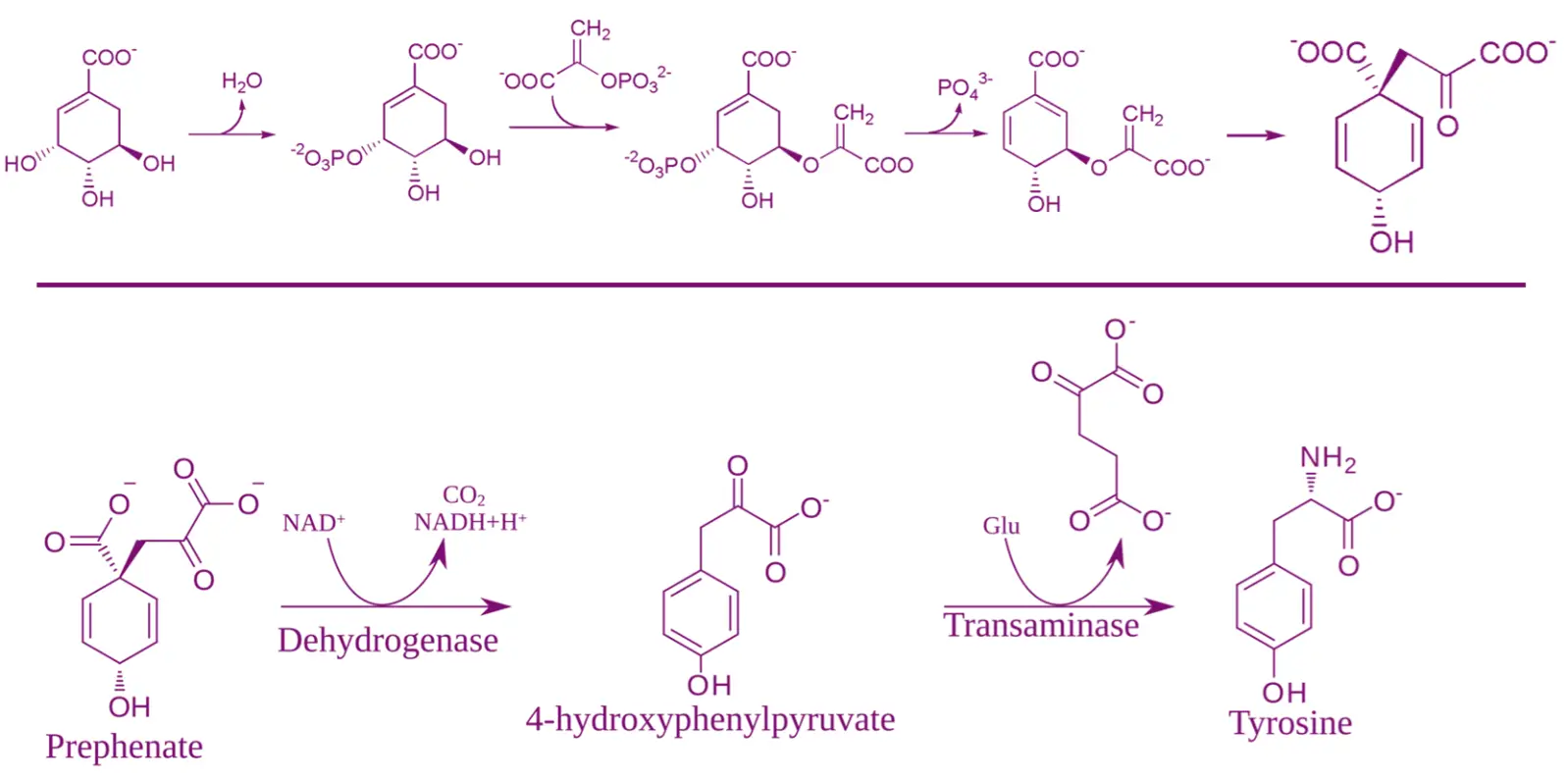Shikimic Acid Pathway:
Overview:
- The Shikimic acid pathway is a central biosynthetic route responsible for the production of aromatic amino acids (phenylalanine, tyrosine, tryptophan) and various aromatic secondary metabolites.
- It is not present in animals, making it a major target for herbicides and antimicrobial agents.
Key Steps:

-
Formation of Shikimic Acid
- Starting materials:
- Phosphoenolpyruvate (PEP): Derived from glycolysis.
- Erythrose-4-phosphate: Derived from the pentose phosphate pathway.
- These precursors undergo condensation and multiple enzymatic reactions to form shikimic acid.
- Starting materials:
-
Formation of Chorismate
- Shikimic acid is phosphorylated to form shikimate-3-phosphate, which is then converted to chorismate.
- Chorismate is a crucial branching point leading to the biosynthesis of aromatic amino acids and other secondary metabolites.
-
Aromatic Amino Acid Biosynthesis
- Phenylalanine and Tyrosine: Chorismate is converted into prephenate, which serves as a precursor for these amino acids.
- Tryptophan: Chorismate is converted to anthranilate, a precursor to tryptophan.
- Phenylalanine and Tyrosine are important for secondary metabolic pathways like the phenylpropanoid pathway.
Major Secondary Metabolites from the Shikimic Pathway:
- Phenylpropanoids (via phenylalanine): Include flavonoids, lignins, coumarins, and phenolic acids.
- Alkaloids (some classes are derived from tryptophan or tyrosine).
- Indole derivatives (e.g., indole-3-acetic acid, the plant hormone auxin, derived from tryptophan).
- Benzoic acids (e.g., salicylic acid).
Biological Significance:
- Plant Growth and Development: Aromatic amino acids (phenylalanine, tyrosine, tryptophan) are precursors for proteins, hormones, and pigments.
- Defense Mechanisms: Secondary metabolites (e.g., phytoalexins, lignin, salicylic acid) protect plants from pathogens and herbivores.
- Pollinator Attraction: Flavonoids, from phenylpropanoids, contribute to flower pigmentation and attract pollinators.
- Structural Integrity: Lignins, derived from phenylalanine, provide strength to cell walls.
Click Here to Watch the Best Pharma Videos

